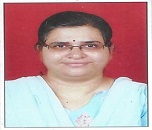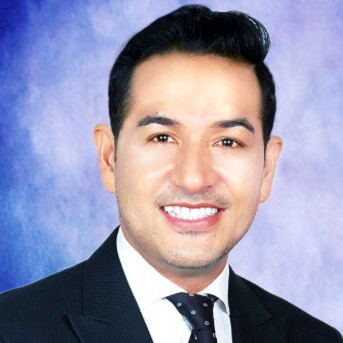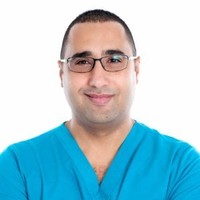Scientific Program
Keynote Session:
Oral Session 1:
- EXPLORE THE LATEST TRENDS IN DENTAL SCIENCE
A PHP Error was encountered
Severity: 8192
Message: trim(): Passing null to parameter #1 ($string) of type string is deprecated
Filename: pastconference/past-program-schedule.php
Line Number: 354
Backtrace:
File: /efsdata/meetingsint-com/application/views/pastconference/past-program-schedule.php
Line: 354
Function: trim
File: /efsdata/meetingsint-com/application/controllers/Pastconference.php
Line: 128
Function: view
File: /efsdata/meetingsint-com/index.php
Line: 317
Function: require_once
Title: ORAL MANIFESTATIONS OF SYSTEMIC DISEASE.
Biography:
Dr. Vaishali Samir Joshi has done expertise in Oral Medicine and Radiology. She has written many dentistry books. Many national and international publications are there on her name. She has a teaching experience of 15 years in Dentistry at Bharati vidyapeeth Dental college and Hospital Pune India. She has conducted many dental check up camps to develop awareness among Indian population for oral health. She has keen interest in doing research in Oral maxillofacial Radioogy and Oral Cancer.
Abstract:
Careful examination of the oral cavity may reveal findings indicative of an underlying systemic condition, and allow for early diagnosis and treatment. Examination should include evaluation for mucosal changes, periodontal inflammation and bleeding, and general condition of the teeth. Oral findings of anemia may include mucosal pallor, atrophic glossitis, and candidiasis. Oral ulceration may be found in patients with lupus erythematosus, pemphigus vulgaris, or Crohn disease. In 2000, the U.S. Surgeon General's report Oral Health in America highlighted numerous ways in which oral and general health are linked. Oral examination can reveal signs and symptoms of immunologic diseases, endocrinopathies, hematologic conditions, systemic infections, and nutritional disorders. In addition, several studies have reported associations between periodontal disease and diabetes mellitus, heart disease, stroke, and adverse pregnancy outcomes. Identifying these oral findings may allow for early diagnosis and treatment. In both adults and pediatric patients, poor oral health has been linked to poorer health outcomes overall. Thorough history taking and physical examination by dentists may aid in determining the underlying etiology of oral changes and allow for earlier intervention by medical colleagues. The appearance in December 2020 of a new coronavirus has caused an unprecedented pandemic in the modern era. Undoubtedly, the disease produced by the novel coronavirus and its consequences have posed a challenge for health authorities worldwide. During this period, despite the implications of saliva for virus transmission and the possibility of salivary glands as a reservoir, few oral manifestations have been reported. Oral dryness, vesiculobullous lesions, aphthous like lesions, dysgeusia, and anosmia are the most common oral signs reported. Meticulous identification of such symptoms may help in early diagnosis and timely treatment. This speech will focuses on various oral manifestation associated with the general pathologies of the human body.
A PHP Error was encountered
Severity: 8192
Message: trim(): Passing null to parameter #1 ($string) of type string is deprecated
Filename: pastconference/past-program-schedule.php
Line Number: 354
Backtrace:
File: /efsdata/meetingsint-com/application/views/pastconference/past-program-schedule.php
Line: 354
Function: trim
File: /efsdata/meetingsint-com/application/controllers/Pastconference.php
Line: 128
Function: view
File: /efsdata/meetingsint-com/index.php
Line: 317
Function: require_once
Title: COMPLICATIONS ASSOCIATED WITH I.V FENTANYL IN PATIENTS UNDERGOING MINOR ORAL SURGERIES.
Biography:
Dr. Jimmy Kayastha, is a Consultant in Oral and Maxillofacial Medicine and Surgery at Dental Health Solutions Inc., San Francisco, California. He served as the Director for Advanced Education in General Dentistry Residency program at the Marshfield Clinic, Wisconsin. He was appointed Adjunct Clinical Faculty at Case Western Reserve University and Miami Valley Hospital, Ohio. He earned his doctorate from Nova Southeastern University, Florida. He completed his General Practice Residency at Miami Valley Hospital and Oral Medicine Residency at Carolinas Medical Center. He then completed a Fellowship from the Cleveland Clinic and Orofacial Pain Fellowship at Walter Reed National Military Medical Center, Maryland and Glasgow Dental Hospital, United Kingdom. He is an internationally recognized speaker has captivated medical and dental professionals worldwide to motivate real change. He has had scientific publications in the Journal American Medical Informatics Association, Journal American Dental Association and Journal of Oral Surgery, Oral Medicine, Oral Pathology, Oral Radiology and Endodontology.
Abstract:
Anxiety control remains an important concern in dental practice. We evaluated the incidence, nature, and sequelae of complications during and after minor oral surgeries performed under intravenous midazolam and fentanyl sedation using the titration technique. The medical records of patients who had undergone minor oral surgeries under moderate intravenous midazolam and fentanyl sedation at our institution between January 1, 2018 and December 31, 2020 were retrospectively evaluated. Age, sex, body mass index, medical history, American Society of Anesthesiologists (ASA) classification, indications for sedation, amount of sedative used, surgical duration, and recovery time were evaluated for all patients. Results In total, 107 patients aged 84 years were included. ASA class I and class II were observed for 56.1% and 43.9% patients, respectively. Complications associated with sedation occurred in 11 (10.2%) patients. There were no serious adverse events. Oxygen saturation reached 95% during the procedure in six patients; this was successfully managed by stimulating the patients to take a deep breath.
Title: Get the most benefit from remaining roots & dont extract.
Biography:
Dr Khaled Nasr is the founder of Core Basics PT international ( NY, NJ, Cairo, and Dubai). Core Basics PT is a unique boutique Physiotherapy practice where luxury meets the latest American technology and standards in Rehabilitation. Also, Dr. Nasr is the founder of Men's Physical Therapy in NJ. Men's PT is the first of its Kind in NY/NJ area where a dedicated healthcare professionals provide specialized rehabilitation services in a comfortable and supportive atmosphere.
Abstract:
It’s about the full benefit of remaining roots either with peri apical lesion or not , to take place as crowns beside implants , as in cost it’s much cheaper.. first we don’t have to extract remaining roots , we check the mobility, bone level, then we start to treat any peri apical lesion , when the alveolar bone surrounding apex is healthy and ready to do root canal fillings, we do it putting in consideration to obturate the apical third .. then we choose the roots which can help.. for example.. distal root of. Lower 6 and 7 .. also palatal root of upper 6 and 7 , any anterior teeth .. we use the post and it should be at least half root length or more if possible, during insertion we add cement to the post to assure complete fit . Wait till setting of cement. Then bring cupper band , try many times till you get the appropriate size which fits ur remaining root .. then now u add the filling material, I personally prefer amalgam, but it’s up to u to shift to any thing else, wait till partial setting, remove the cupper band , by bur cutting .. then do ur reduction and take the impression.. this is used as single crown not in bridge or with other implants.. it’s speedy and cheap.. and with me it shows great success putting in consideration perfect job in all steps.
A PHP Error was encountered
Severity: 8192
Message: trim(): Passing null to parameter #1 ($string) of type string is deprecated
Filename: pastconference/past-program-schedule.php
Line Number: 354
Backtrace:
File: /efsdata/meetingsint-com/application/views/pastconference/past-program-schedule.php
Line: 354
Function: trim
File: /efsdata/meetingsint-com/application/controllers/Pastconference.php
Line: 128
Function: view
File: /efsdata/meetingsint-com/index.php
Line: 317
Function: require_once
Title: The role of charting dental anomalies in human identification.
Biography:
Jayapriya Jayakumar, Dentist by profession. (BDS from A. B Shetty Memorial Institute of ental Sciences, India). Currently doing my Masters in Forensic Odontology in the University of Dundee, UK
Abstract:
An increase in awareness on dental hygiene among people through the years consequently provoked a significant decrease in the occurrence of dental caries, and thus, a decrease in the number of dental restorations. This improvement of oral health affected the comparative dental analysis using dental treatments for human identification; hence, existing dental features or anomalies could act as unique identifying features. This study evaluated the awareness of dentists on charting dental anomalies by a dental charting task and addressed the importance of maintaining dental records for forensic and medico-legal purposes. An online survey-based study was conducted on 101 dentists practicing in the South Indian states of Karnataka, Kerala and Tamil Nadu through Google Forms. Results showed that clearly visible anomalies such as midline diastema, crowding, and transposition were mentioned by only 11.8 %, 22.7 % and 5.9 % of the respondents respectively. 17.8 % misnamed the accessory cusp on a premolar as a Talon’s cusp. The awareness of Forensic odontology among dentists was exceptional but the dental charting needs improvement. A “Scale of Forensic Significance of Dental Features” was created to interpret the accuracy in recording anomalies which comprised of three parameters namely: Incorrect answer(0 %), Partially Correct answer(50%) and Accurate answer(100%). They classify different levels of forensic significance of dental findings in human identification. Only a few respondents submitted an Accurate or a Partially Correct answer and, as a result, an Atlas of Dental Anomalies.





